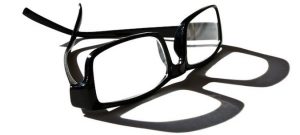The Dangers of Vision
 “You push the button, we do the rest.” Kodak founder George Eastman’s vision was to put a camera in everyone’s hands. The inexpensive Brownie was the first camera that the public could afford, and they used it to capture all those “Kodak moments.” This is a company that did not lack ambition; they had the best minds in the world, they had innovative technology and patents.
“You push the button, we do the rest.” Kodak founder George Eastman’s vision was to put a camera in everyone’s hands. The inexpensive Brownie was the first camera that the public could afford, and they used it to capture all those “Kodak moments.” This is a company that did not lack ambition; they had the best minds in the world, they had innovative technology and patents.




 We often think complexity is a function of size; in business, the bigger the company, the more complex its operations and infrastructure. According to Forrester analyst Jost Hoppermann, complexity is based on the number of interdependent and interconnected stakeholders, the various technology systems, and the organizational structures in place in a business. So, a mom-and-pop with two employees is, of course, simpler than a multinational corporation. No one told that to mom and pop. When it comes to
We often think complexity is a function of size; in business, the bigger the company, the more complex its operations and infrastructure. According to Forrester analyst Jost Hoppermann, complexity is based on the number of interdependent and interconnected stakeholders, the various technology systems, and the organizational structures in place in a business. So, a mom-and-pop with two employees is, of course, simpler than a multinational corporation. No one told that to mom and pop. When it comes to When I come into an organization, it is not to criticize a team’s work or to dismantle the team piece by piece; it is to
When I come into an organization, it is not to criticize a team’s work or to dismantle the team piece by piece; it is to  Chicago Bulls point guard Derrick Rose tore some nasty things in his knee and is looking at rehab for six to nine months. He was the team’s best player, leading the Bulls to the playoffs each year since he started, earning Rookie of the Year, and becoming only the second Bulls player to earn the MVP. Now he’s out for 2012-13, and the Bulls have to figure out how to get to the playoffs without him. Organizations find themselves in this situation, maybe not because of torn ACLs, but the resulting chaos and confusion can be equally crippling. When you lose
Chicago Bulls point guard Derrick Rose tore some nasty things in his knee and is looking at rehab for six to nine months. He was the team’s best player, leading the Bulls to the playoffs each year since he started, earning Rookie of the Year, and becoming only the second Bulls player to earn the MVP. Now he’s out for 2012-13, and the Bulls have to figure out how to get to the playoffs without him. Organizations find themselves in this situation, maybe not because of torn ACLs, but the resulting chaos and confusion can be equally crippling. When you lose  Tool: a device or implement used to carry out a specific function. That’s it. A hammer is a hammer; a software program is a software program. Both are devices intended to carry out a specific function. We can tend to put too much emphasis on having the newest and shiniest tools and not on training the people who are actually going to be using them. A tool is simply something that enables the project to be pushed forward; new and shiny is fine, and in fact, they can be
Tool: a device or implement used to carry out a specific function. That’s it. A hammer is a hammer; a software program is a software program. Both are devices intended to carry out a specific function. We can tend to put too much emphasis on having the newest and shiniest tools and not on training the people who are actually going to be using them. A tool is simply something that enables the project to be pushed forward; new and shiny is fine, and in fact, they can be